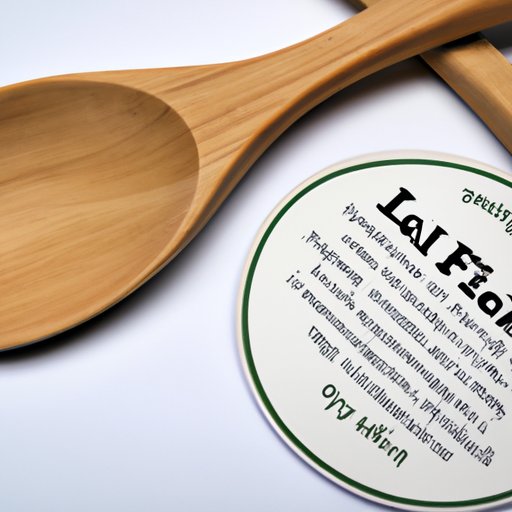
I. Introduction
Flexitarianism is a dietary philosophy that has been gaining momentum in recent years. This way of eating combines the health benefits of plant-based diets with the flexibility and convenience of occasional meat consumption. In this article, we will explore the practical steps of transitioning to a flexitarian diet, the benefits of this approach, its environmental impact, and how it can improve gut health and fuel athletic performance.
II. Flexitarianism: A Balanced Diet for the Modern World
A flexitarian diet emphasizes plant-based foods while still including modest amounts of animal products. This way of eating is often seen as a more achievable and realistic version of vegetarianism or veganism.
One of the key benefits of flexitarianism is its potential to reduce the risk of chronic diseases. Plant-based diets have been linked to lower rates of heart disease, type 2 diabetes, and some types of cancer. Additionally, a flexitarian diet can improve digestion, boost energy levels, and reduce food waste by utilizing more plant-based ingredients.
Compared to other popular diets, such as vegetarianism, veganism, or omnivory, flexitarianism offers greater flexibility and lower social barriers. While vegans and vegetarians may struggle to find options when dining out or attending events, flexitarians can enjoy the occasional meat dish without compromising their dietary principles.
Some misconceptions surround flexitarianism, however. One common concern is the adequacy of protein intake. While plant-based diets can provide all necessary amino acids, it’s important to embrace variety and combine different protein sources such as legumes, nuts, and whole grains. Affordability and taste are other frequently cited issues, but with the abundance of affordable plant-based options and the creativity of modern cuisine, these concerns are increasingly unfounded.
III. How to Transition to a Flexitarian Diet
Transitioning to a flexitarian diet can be a gradual process, starting with small changes in your diet and habits. Here are some practical steps you can take:
Planning meals ahead of time is crucial. Start by incorporating more plant-based foods into your diet gradually. Lentils, beans, tofu, and tempeh are excellent sources of plant-based protein. Vegetables, fruits, whole grains, nuts, and seeds should also feature frequently in your diet.
Online resources and vegan cookbooks can provide inspiration and creative recipes to keep you interested. Shopping mindfully, buying in bulk, and choosing seasonal produce can also help keep costs down. When shopping for meat, choose lean cuts, and cook them in smaller portions than usual. This will minimize waste and make it easier to balance your intake of animal products.
To ensure adequate nutrition, it’s important to be mindful of key nutrients such as protein, iron, calcium, vitamin B12, and omega-3 fatty acids. Although plant-based foods can provide many of these nutrients, you may need to supplement with certain vitamins or minerals. A registered dietitian can help you develop a personalized plan and ensure that you are meeting your dietary goals.
IV. The Environmental Benefits of a Flexitarian Diet
One of the most significant impacts of adopting a flexitarian diet is its positive effect on the environment. Animal agriculture is a major contributor to greenhouse gas emissions, deforestation, and water consumption. By reducing meat consumption, choosing sustainable food sources, and supporting environmentally responsible companies, flexitarians can make a significant difference in reducing their environmental footprint.
Reducing meat consumption can also have a positive impact on animal welfare. Choosing plant-based alternatives, such as mock meats or dairy-free alternatives, can also help to reduce the demand for animal products and support ethical farming practices.
Although individual actions may seem small, collective effort can contribute to significant global change. By choosing to adopt a flexitarian diet, you can join a community of individuals committed to reducing the negative impact of animal agriculture on the planet.
V. Flexitarianism for Athletes: How to Fuel Your Workouts
Athletes may require different nutrient ratios and timing, emphasizing the importance of adequate protein, carbohydrates, healthy fats, vitamins, and minerals. While proteins can be obtained from vegetarian sources such as legumes and grains, sources such as eggs, fish, or chicken can be also consumed in moderation. Consuming carbohydrates and healthy fats from plant-based sources like whole grains, fruits, vegetables, nuts, and seeds can improve recovery and optimize performance.
Flexitarian athletes should aim to plan their meals in advance, ensuring they consume enough protein, carbohydrates, and healthy fats at the right times to support training progress. This may involve consuming a protein source directly after exercise or adjusting meal frequency throughout the day. Meal planning and tracking macros can be helpful for those with specific athletic goals.
VI. How a Flexitarian Diet Can Improve Your Gut Health
Gut health has become a crucial topic in recent years, and research suggests that the consumption of plant-based foods may improve the gut microbiome due to the fermentable fibers and prebiotics they contain. Studies also suggest that diverse diets, as opposed to restrictive ones, lead to greater diversity of gut bacteria and promote optimal gut function. The occasional inclusion of lean meat may provide high-quality proteins that feed the growth of beneficial gut bacteria.
VII. Conclusion
A flexitarian diet offers a balanced and sustainable way of eating that is increasingly popular for its many health, environmental, and ethical benefits. Transitioning to a flexitarian diet involves incorporating more plant-based foods into your diet and choosing high-quality animal products in moderation. Whether you’re an athlete or someone interested in improving your gut health, a flexitarian lifestyle can help you achieve your health-related goals while minimizing your overall environmental impact. We encourage you to give it a try and join a growing community of individuals committed to making positive changes for themselves and the planet.





